Let me start with a brief self-introduction. My name is Xiao Xun, and I entered the cryptocurrency circle in 2014 with an initial capital of less than 10,000 yuan. With the help of altcoins and contracts, after several ups and downs, I have now accumulated profits exceeding 10,000 times. I am now a professional trader in both the cryptocurrency spot and contract markets, having earned over 20 million in 2019 alone.
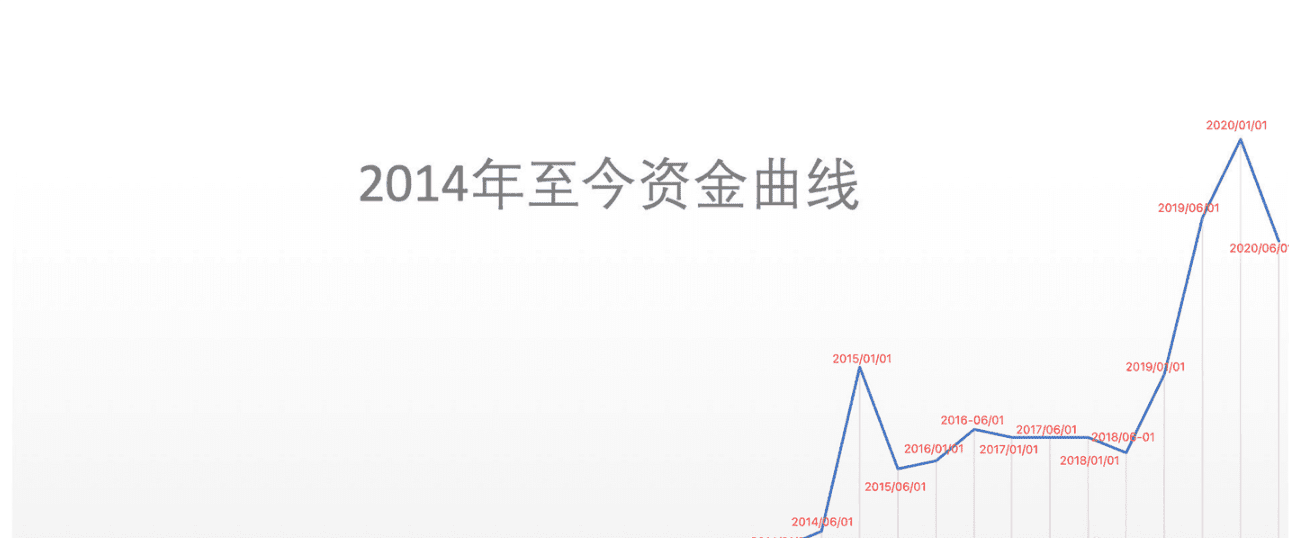
Although I joined in 2014, I truly started making profits from 2019 as a professional cryptocurrency trader. In these more than six years, I have grown from a small retail investor to a large one.
Therefore, I understand the inner feelings of small retail investors the most. Today, I share valuable insights not to show off, not to write a personal biography, but to document my personal trading journey and share my trading philosophy. I hope to teach people to fish, allowing small retail investors in the cryptocurrency world to truly take fewer detours and achieve financial freedom sooner.
Secrets of success in the cryptocurrency circle - don't regret it:
Profit is about persisting in the trending positions that others have given up, seizing opportunities that others do not want, and doing things that others dare not do. In investment, there is only giving up due to insufficient persistence, not a complete failure. The same goes for trading. Originally optimistic about a direction, but as the market fluctuates, one changes their original direction. Initially bearish, one exits and reverses to go long just because the market has risen a little, ultimately delaying the downward trend and causing losses against the trend. Such examples are countless in trading; any success requires persistence.
So what are the four mindsets and five techniques a successful cryptocurrency trader should have for long-term survival in the market?
1. Do not be proud and complacent when making profits
A proud person ultimately destroys themselves in their pride. In the process of investment and financial management, if a person becomes proud and complacent due to profits, there will always come a day of losses. The reason is that proud and complacent people will ignore others' opinions and suggestions due to a little achievement. Even if the market changes, they will stubbornly believe in themselves, thinking their decisions are always correct, while also neglecting risk prevention, which can ultimately lead to losses.
2. Do not rush to recover losses when losing money
It is normal for cryptocurrency trading to have gains and losses. Having talked about profits, let's now discuss losses. Profits can make some people proud and complacent, while losses can trigger a strong desire in many to recover. However, recovering losses also depends on timing. If one is too eager to recover, it can lead to irrational decisions. For example, some people, eager to recover losses, may bet all their trading capital on a seemingly promising coin. However, the market is always unpredictable and uncontrollable. If that coin's price falls, they may end up not only failing to recover losses but also incurring even greater losses.
3. Do not be greedy for quick gains
Accumulating wealth through cryptocurrency trading is a long process. If during this process, one is both greedy and seeks quick profits, it is basically impossible to achieve wealth growth. Both mentalities lead people to blindly chase profits, and when faced with high returns, they lose their rationality. However, high returns mean high risks, and blind investments can only lead to failure. Only by pursuing stable wealth growth can one balance risk and profit.
4. Do not be overly worried about gains and losses
Yingying believes that investors who are overly anxious about gains and losses often struggle for a long time before investing, fearing their money will incur losses. Once they finally make the decision to invest, this mentality becomes even more pronounced. As soon as they see their account balance decrease, they become anxious and irritated. If the decrease is too much, they either withdraw their funds or seek insider information, hoping to recover quickly, ultimately leading to losses. At the same time, if they hear news about platforms shutting down or withdrawal difficulties, they will worry about the safety of their investments, even if their platform has no issues, and choose not to invest again, making it difficult to continue on the path of investment and financial management.
If your mindset is always not adjusted well, it will be difficult to see the situation clearly. Once your investment mindset stabilizes, let's talk about the trading skills you want to know:
1. Use technical indicators but do not get stuck in the quagmire of technical indicators
There are countless technical indicators on the K-line chart. Sometimes, learning too much can disrupt objective analysis. The ultimate goal of learning these indicators is to extract the information you need from them. If you have obtained the necessary information from a certain indicator, there is no need to get tangled up with other indicators, as many indicators on the K-line chart have similarities.
2. Go with the trend.
Those who follow the trend will thrive, while those who go against it will perish. In investment, one should act according to the trend. Grasping the major trend is like sitting on a spaceship; it will quickly take you to great heights, making it difficult not to make a profit. Conversely, if one operates against the trend, especially in a big market, those who operate against the trend will fall into a bottomless pit that cannot be filled, deeply trapping investors and directly causing huge losses. Therefore, grasping the trend is more important than anything else.
3. History may not repeat itself, but there are lessons to be learned.
At the technical analysis level, it is indeed possible to capture clues from historical data at certain times. The cyclical nature of the market never changes; other markets are similar. They will transition from adjustment periods to growth periods, from growth periods to maturity periods, and then from maturity periods to recession periods, repeating endlessly. Therefore, historical data can be considered comprehensively in technical analysis.
4. Conduct in-depth analysis on the news.
The currency market transmits a large amount of information every day, so it is very important to conduct in-depth analysis of this information. As a qualified investor, the most basic skill is to learn to discern the truth and falsehood of information, especially since some half-truths can be very misleading. Sometimes, a piece of news can directly impact the directional judgment of the market.
5. Summarize experiences and find a method that suits you.
Watching fish by the pool is not as good as retreating to weave a net. If you do not enter the tiger's den, how can you catch the tiger cub? We always envy others for how much they can earn in the currency market, and we always watch others operate enthusiastically, but we dare not enter the market ourselves, fearing that we will lose everything once we enter. Here, I suggest that if you have enough knowledge and enough skills, when in life can you make a few bold moves?
The two major factors that dominate the market, technology and news, are topics that investors have long debated about whether technology or news dominates the market. In fact, neither does; it is human sentiment that dominates the market. Without profit motivation and greed, there would be no traps and battles. To navigate the market, one must deeply understand the strategies of offense and defense to be secure on the windward side and turn danger into safety in traps. The saying goes, if you give trust, I will repay you with profits!
If you are already in a not-so-ideal situation, you can come to me, and I will help you without letting you make the same mistakes again; if you have already been in this market and have been hurt, feel free to seek me out, and I will confidently help you regain your confidence.
Practical analysis of support and resistance! (valuable insights)
When will support and resistance be broken?
First, when close to resistance, the lows continue to rise, such as in some ascending triangles.
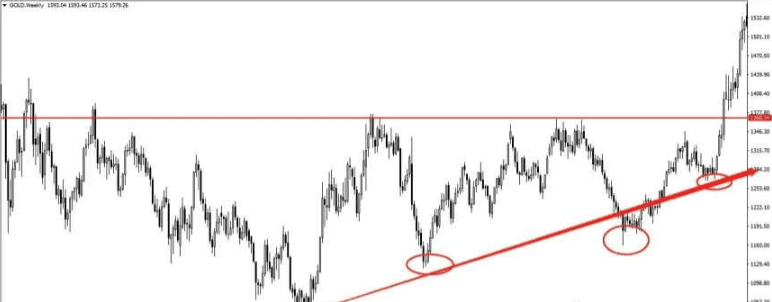
As shown in the figure above, the price forms a series of gradually rising lows during the upward process, and then breaks through this resistance level with a large bullish candle.
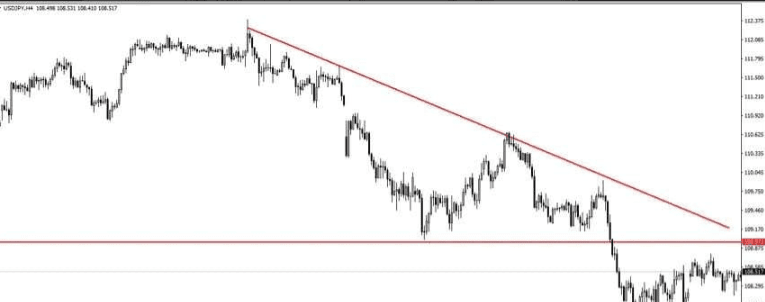
As shown in the figure above, the price first forms gradually falling highs, which is a descending triangle. It then breaks through this key support level.
Second, when close to support, the highs gradually fall, such as in some descending triangles.
Technical analysis; RSI indicator analysis (valuable insights)
Technical analysis mainly focuses on trend analysis, spatial analysis, buy-sell analysis, resistance analysis, etc.
Technical analysis focuses on the micro, emphasizing price points.
1. RSI Relative Strength Index
The RSI indicator was originally created by Welles Wilder. Its principle is to estimate the strength of market movement trends by calculating the magnitude of price fluctuations, thus predicting the continuation or reversal of trends. Essentially, it shows the percentage of upward price fluctuations relative to total price fluctuations. If its value is high, it indicates a strong market; if the value is low, it indicates a weak market. This indicator is usually regarded as an important measurement tool, but its effectiveness is closely related to the market capitalization size of stocks and futures. Larger market capitalizations tend to have smaller fluctuations, while smaller market capitalizations tend to have larger fluctuations.
Due to the limitations of the calculation formula, regardless of how the price fluctuates, the value of the strength index is always between 0 and 100. A strength index value above 50 indicates a strong market, while below 50 indicates a weak market.
2. RSI Oversold, Overbought, Golden Cross, Dead Cross
Overbought:
Generally speaking, when the RSI is above 80, it indicates that there is excessive buying in the market, meaning it is overbought, and a downward correction may occur. This is a sell signal. (As shown in the figure below)
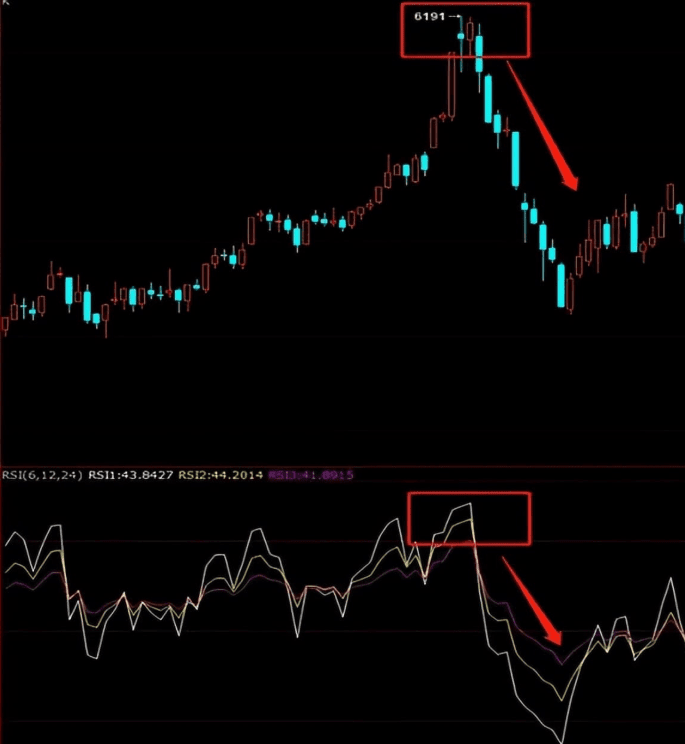
Add a caption to the image, no more than 140 characters (optional)
Oversold:
When the RSI breaks down below 20, it indicates that there are many sales in the market, meaning it is oversold, and there is limited space for the price to continue falling. It may turn to rise, which is a buy signal. (As shown in the figure below)
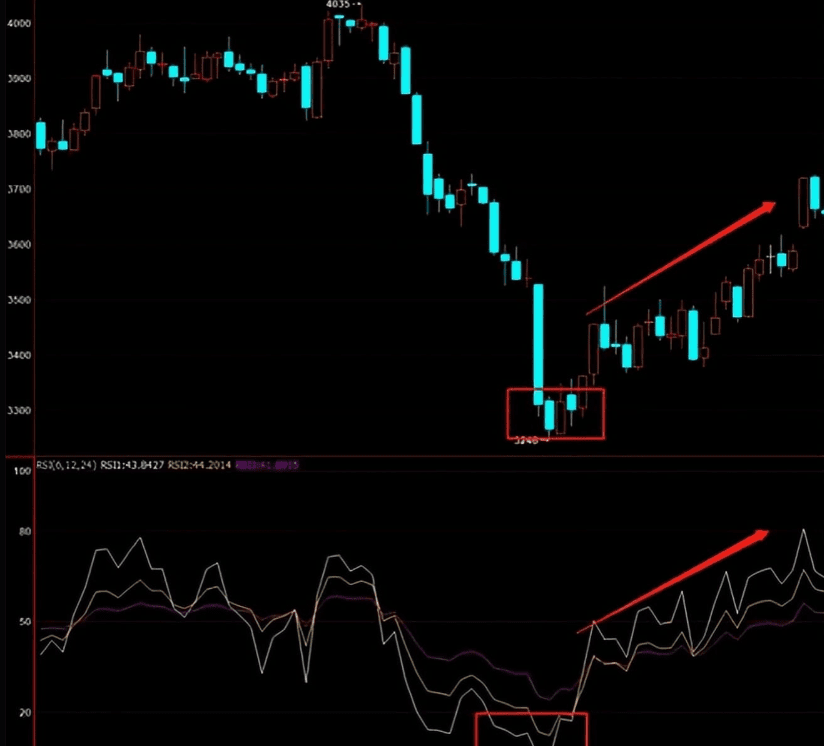
Golden Cross:
When the short-term RSI line crosses above the long-term RSI line at a low level, it forms a golden cross, indicating a high possibility of price increase, which is a buy signal. It is worth noting that a golden cross occurring below 20 is more effective, meaning the RSI has both formed a golden cross and is also oversold. When a golden cross occurs between 40-60, it lacks guiding significance for the market trend. (As shown in the figure below)
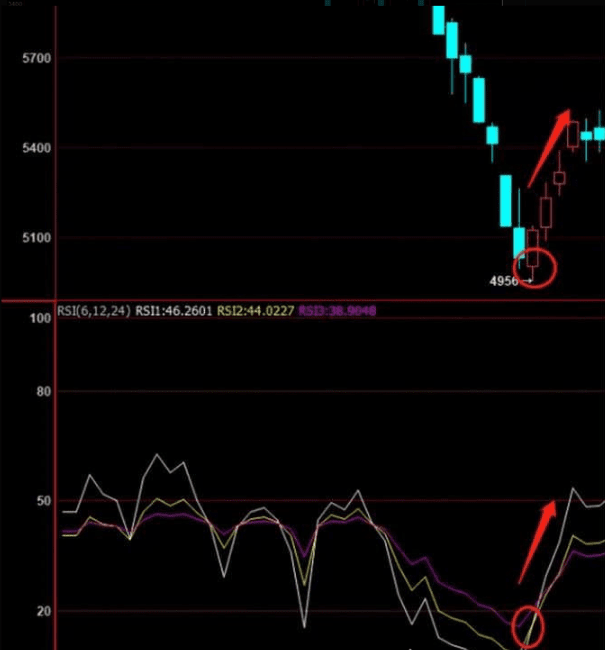
Dead Cross:
When the short-term RSI line breaks down below the long-term RSI line at a high level, it forms a dead cross, indicating a high possibility of price decrease, which is a sell signal. It is worth noting that a dead cross occurring above 80 is more effective, meaning the RSI has also appeared.
Dead Cross occurs with overbought conditions, and when the RSI shows a dead cross between 40-60, it lacks guiding significance for the market trend. (As shown in the figure below)
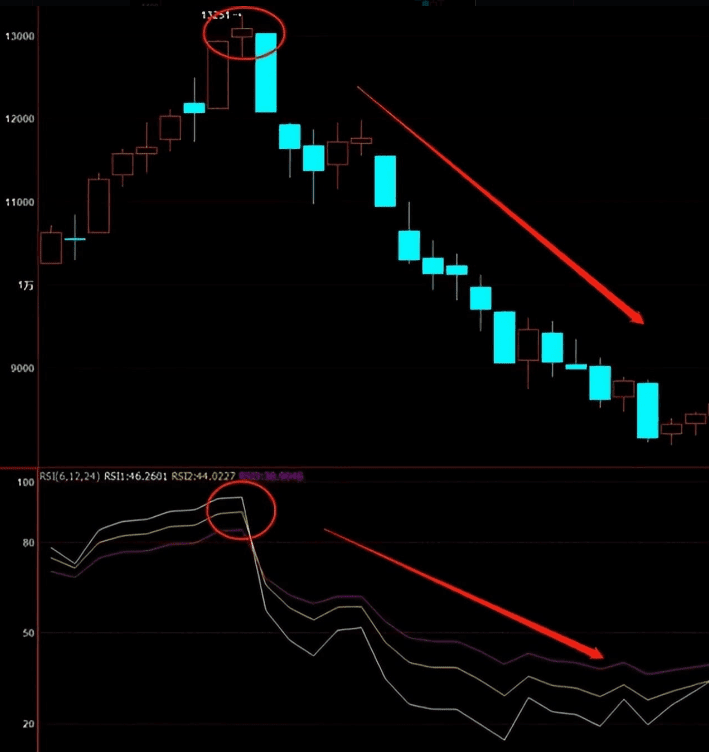
Four major techniques for cryptocurrency position recovery: (1) Strategy guidance for short-term position recovery: Timeliness
If you completely misjudge a market trend, you should quickly seize the opportunity to exit and adjust your operation direction. This is very important. When you find that the trend is unfavorable, decisively close the position to avoid further losses due to continued one-sided fluctuations. Cutting losses requires a certain level of wisdom; only by decisively exiting can you protect your capital, and investors should consider comprehensively. Short-term investors in a one-sided market should also pay attention to the techniques of cutting losses and taking profits in cryptocurrency trading. Sometimes, if you do not take profits or cut losses, the longer you hold, the greater the losses will be.
(2) Strategy guidance for long-term position recovery: Patience
When you see the big trend (for example, a bullish market), you need to stabilize your mindset. In fact, when a position is trapped in a small trend (when the market makes a downward movement), you can first close your position to cut losses. Never be too eager for quick gains; choose to enter at a lower price, allowing you to earn a certain level of price difference and have the opportunity to gain profits from the big trend, which is a favorable situation for investors.
(3) Strategy guidance for swing position recovery: Accuracy
Mastering cryptocurrency stop-loss and take-profit strategies actually needs to vary from person to person and from time to time. The method of swing trading is applicable to various trapped situations, but it needs to be used flexibly. Everyone needs to accurately judge the market trend, especially in a volatile market. Simply put, it relies on the price fluctuations of the coin to achieve profit from price differences.
(4) Strategy guidance for light position recovery: Flexibility
Using idle funds to lower costs is also a very good method. As long as the operation is appropriate, it can be resolved in case of a rebound.
Overall, when investing, it is important to have reasonable references and a guiding direction, timely take profits and cut losses to realize profits. This is a very important investment technique; at the same time, when analyzing market trends, we should refer to multiple sources and consider both technical and news aspects to improve the accuracy of our market predictions, so that we can act in line with the trend and earn profits. #币圈暴富
BTC
